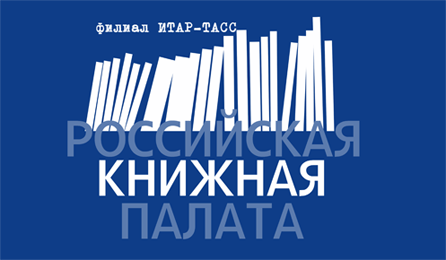Nefedova T.G. Polarization of the social-economic space and prospects of rural areas in the old-developed regions of Central Russia // The Russian Peasant Studies. 2021. V.6. №1. P. 126-153.
DOI: 10.22394/2500-1809-2021-6-1-126-153
Annotation
The article is based on the presentation made on March 11, 2021 at the scientific seminar of the Chayanov Research Center and the Center for Agrarian Studies of the RANEPA. The presentation summarized publications based on the research supported by the Russian Science Foundation (project No. 19-17-00174 “Development of the old-developed regions under the social-economic polarization and the reduction of the developed space of European Russia”). The research aimed at identifying challenges and consequences of the Russian spatial polarization for rural areas at different levels – from regional to local – on the example of Central Russia (including the Moscow Region and its neighboring regions). The author considers features of rural areas in Central Russia, describes trends of their development and consequences of the longterm rural depopulation which was especially strong around the Moscow Region. The author focuses on different types of migration (interregional, intraregional and international) and their reasons; identifies centers of the contemporary population concentration; describes the transformation of agriculture in these regions, its organizational and spatial changes, the main trends in the decline and revival of agricultural production and its impact on rural settlement; proves that the polarization of rural areas affects all levels – regions, municipal districts and settlements. The article is based on the integrated approach that considers rural areas in their interaction with cities: the influence of urban investments on the development of rural areas, the increasing concentration of the rural population in the suburbs, the role of summer residents in the redevelopment of rural areas and in the preservation of rural settlements. Finally, the author assesses the consequences of the authorities’ decisions for rural areas.
Keywords
Old-developed regions, cities, rural areas, agriculture, population migration, land use, summer residents.
About the author
Nefedova Tatyana G., DSc (Geography), Chief Researcher, Institute of Geography, Russian Academy of Sciences. 119017, Moscow, Staromonetny per., 29.
E-mail: This email address is being protected from spambots. You need JavaScript enabled to view it.
Andreenkov S.N. Reforms in the economies’ system and land use in the Novosibirsk Region in the 1990s // The Russian Peasant Studies. 2019. V.4. №4. P. 58-75.
DOI: 10.22394/2500-1809-2019-4-4-58-75
Annotation
The article considers the features of reorganization of agricultural enterprises and land use system in the Novosibirsk Region in the 1990s. This reform was the main direction of the agrarian transformations in the 1990s. The author identifies the logic and consequences of the collective and state farms transformation into various forms of commercial enterprises (joint-stock companies, cooperatives, peasant farms and their associations) and features of the land redistribution. At the first stage of the reform (1991), the collective and state farm system of the Novosibirsk Region did not change, new forms of farms and land use just started to develop, and the size of subsidiary plots significantly increased. At the second stage of the reform (1992–1993), the reorganization of collective and state farms accelerated, a network of large commercial enterprises developed, and the number of peasant farms increased. However, the new organizational-economic system met the market economy standards only formally. The new agricultural jointstock companies and cooperatives did not differ much from their predecessors—collective and state farms. Large farms remained the main supplier of agricultural products on the market although they worked in extremely unfavorable conditions. Nevertheless, the role of small economies represented by peasant farms also increased.
Keywords
land reform, collective farms, state farms, agriculture, land use, Novosibirsk Region
About the author
Andreenkov Sergey N., PhD (History), Senior Researcher, Sector of Agrarian History, Institute of History, Siberian Branch of the Russian Academy of Sciences. 630090, Novosibirsk, Akademika Nikolaeva St., 8.
E-mail: This email address is being protected from spambots. You need JavaScript enabled to view it.
Nefedova T.G. Contemporary peasant economy in the rural-urban environment // The Russian Peasant Studies. 2018. V.3. №1. P. 117-140.
DOI: 10.22394/2500-1809-2018-3-1-117-140
Annotation
The article considers features of contemporary Russian households under the concentration of large enterprises and polarization of the countryside. The author compares farms at the beginning and in the middle of the twentieth century to show that many factors determining the households’ life a century ago are still active. The article describes features of today’s small households and farmers and their main types; identifies their variety in the Non-Black Earth, southern and eastern regions, in the suburbs and on the periphery. Among the factors affecting activities of population in households, the author focuses on the degree of rural depopulation, rural ethnic composition, and interaction between households and large agricultural enterprises. Thus, inefficient enterprises were not replaced by small farms due to the gradual decrease of agricultural activities of rural population. There is a significant share of the unused land with an exception of some southern regions, which proves that land is not the key factor in enhancing agricultural activities of small farms. However, the agricultural land use of gardeners is very intensive except for the suburbs of Moscow and Saint Petersburg. The greatest activity is typical for farms with high marketability, including “shadow farms”, and for subsistence households following peasant traditions and partially self-sufficient.
Keywords
Peasant farm, agricultural enterprises, farmers, household plots, gardeners, land use, livestock.
About the authors
Nefedova Tatyana G., DSc (Geography), Chief Researcher, Institute of Geography, Russian Academy of Sciences; 119017, Moscow, Staromonetny Per., 29.
E-mail: This email address is being protected from spambots. You need JavaScript enabled to view it.





















